
Saving Eichlers in a Modern Community
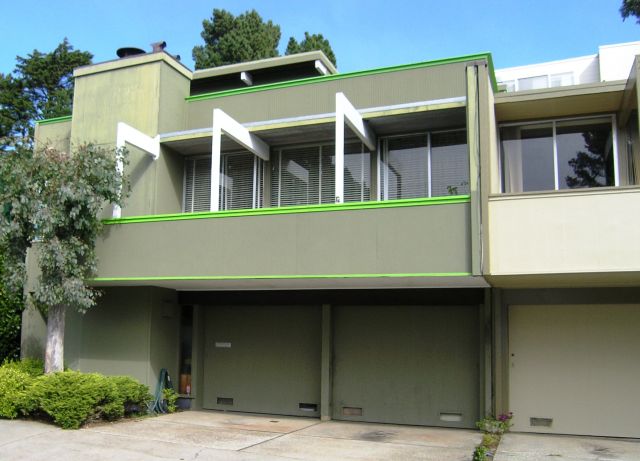 |
|
|
In the years after World War II San Francisco’s rocky Diamond Heights was home to more cattle than people. City planners, hoping to staunch suburban flight, hired architect Vernon DeMars, famed for housing for farm workers, to develop a master plan for what would become “an incredible Modernist, 20th century neighborhood with an interesting history of development and many unique examples of regional architecture and landscape design.”
“Diamond Heights contains one of the highest concentrations of Modernist architecture in San Francisco – with excellent examples of the Bay Area regionalist idioms of Modernist design.”
Those are the words of Hannah Lise Simonson, who has examined pretty much every building in the hilly 325-acre neighborhood and has come to a conclusion. Preservation planners need to take a serious look at the place, including the 104 Eichlers that make up one of the more important historic 'resources' there.
"I don't necessarily think that all of the Diamond Heights Redevelopment Project Area should be preserved through regulation," she writes, "although I do think it deserves study and interpretation. But I do think there are areas within the project area that are likely eligible historic resources, including the Eichler tract."
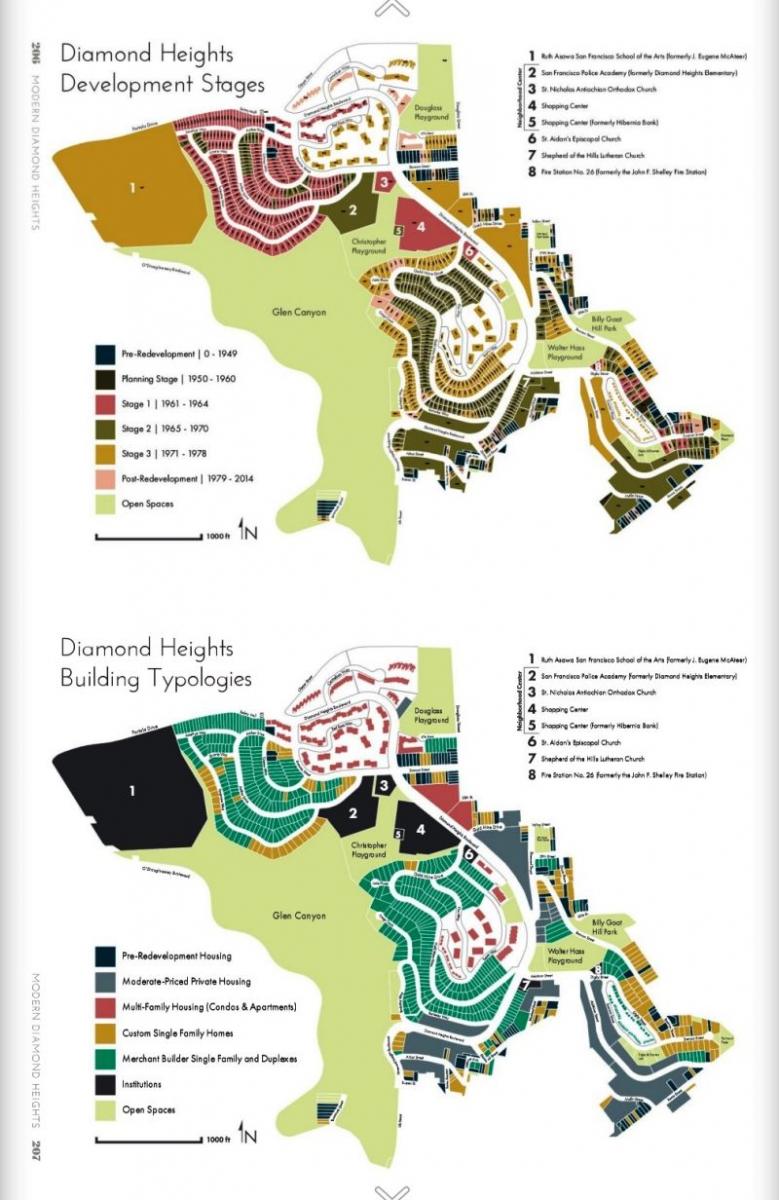 |
|
|
Her 2017 thesis, done for a masters degree at the University of Texas, Austin, ‘Modern Diamond Heights: Dwell-ification and the Challenges of Preserving Modernist, Redevelopment Resources in Diamond Heights, San Francisco,’ is worth reading by people who live in Eichlers and other mid-century modern homes because it deals with issues that affect those homes everywhere – and the wider community around them.
The University of Texas liked it too, naming it Outstanding Master's Thesis in Historic Preservation.
Simonson, who is from San Francisco, did much of her research while working for the San Francisco planning department on a historic context statement for Diamond Heights, which is in the central part of the city, looming above Glen Park and with views to everywhere.
'Context statements' are often done before declaring an area historic. Simonson writes of the importance for residents to understand why their neighborhood may be important. She calls this “information intervention,” meaning that by understanding their neighborhood, people who live there will help preserve it.
Have you seen that phenomenon in your own Eichler tract?
“It is difficult to convince people to care about or take care of resources,” she says, meaning historic places, “if they do not have any context through which to understand their significance.”
Simonson also discusses how people in neighborhoods, or planners, can help preserve them by doing oral histories of the architects or early residents, distributing maps and early photos, and by improving the aesthetics of, say, street medians.
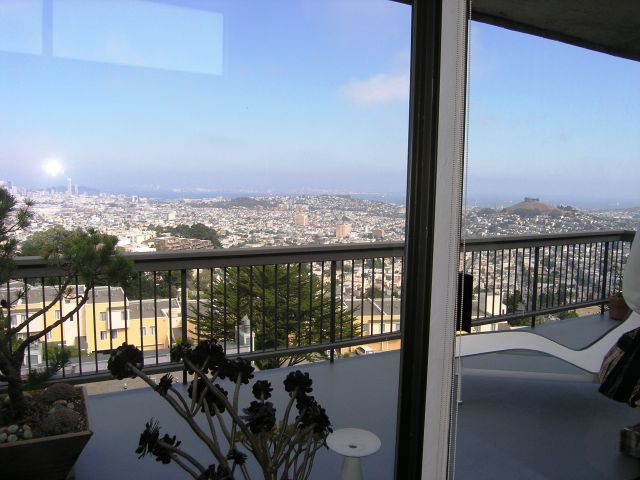 |
|
|
All these things emphasize the value of the community. We have seen all of these things successfully done in other Eichler communities. So has Simonson.
“In one Bay Area Eichler neighborhood, a resident created a laser-print stencil for curb house numbers inspired by the classic Eichler house numbers and Eichler logo,” she writes. “This small intervention draws attention to the Eichler name…the numbers are akin to historical markers.”
Simonson didn’t only suggest that residents learn about Diamond Heights. She is helping teach them, including by leading walking tours of the neighborhood with the Glen Park Neighborhood History Project. The next tour is September 9 and is open to the public for a small donation.
She also brought Diamond Heights and Eichler to national attention, delivering a talk on the topic at a city planning conference in Cleveland.
Eichler built 104 homes, one- and two-story townhouses, as part of the city’s Diamond Heights Redevelopment Project, on Red Rock Hill.
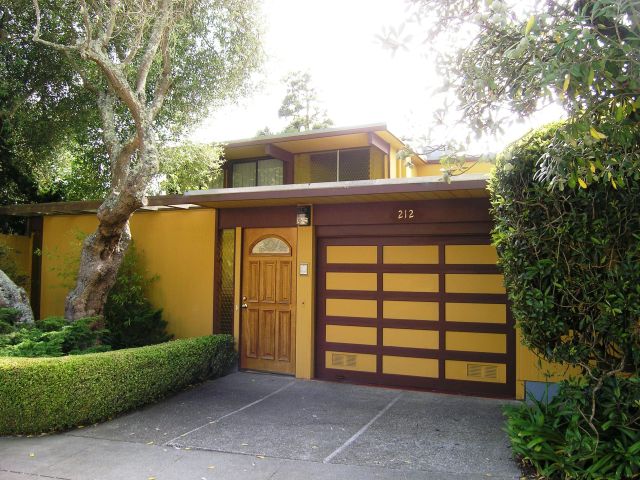 |
|
|
Five different models, some with atriums, were designed by architect Claude Oakland. Landscaping was by the esteemed firm Royston, Hanamoto, Mayes & Beck. The homes are very different than the standard Eichler suburban models, but still retain the feel.
This was a rare example of Eichler building homes in a larger planned community. Another was Foster City. Architect Vernon DeMars designed the overall community plan in 1951, providing for maximum views from each home.
“DeMars conceptualized this ‘suburb within a city’ to appeal to people attracted to the suburban lifestyle, but who still wanted the conveniences of living in the city,” Simonson writes.
Other well known architects designed tract and individual homes in Diamond Heights including Campbell & Wong and Fisher-Freidman Associates.
Simonson explores how the homes have fared over time, showing some that are well preserved and others that are less so. She shows one interesting example of an addition that seems to work – a Claude Oakland 1978 addition to an Eichler he had designed in 1962.
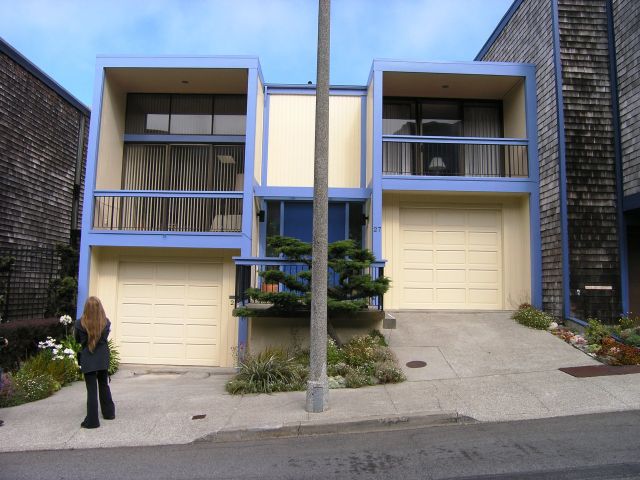 |
|
|
“Since Oakland was the original architect, he was able to, arguably, design an addition that fit in seamlessly with the original design.”
“The addition is successful because it is stepped back, and is, therefore, minimally visible from the street and less disruptive to the general pattern of massing along Amber Drive,” Simonson writes.
“In the case of Diamond Heights, it is particularly important to consider how an addition can affect the building’s relationship to the rest of the neighborhood,” she writes, “as building heights and orientation of windows were carefully thought out during master planning to protect the spectacular views offered by the site topography.”
Simonson focuses on the challenges of preserving mid-century modern homes. How can you retain the original look while upgrading for energy efficiency, for example?
One threat she focuses on she calls ‘Dwell-ification,’ the tendency of people inspired by the popular shelter magazine Dwell to make their homes more modern than modern – in a sleek, 21st century way. It’s a fascinating topic, one this column will explore in a later post.
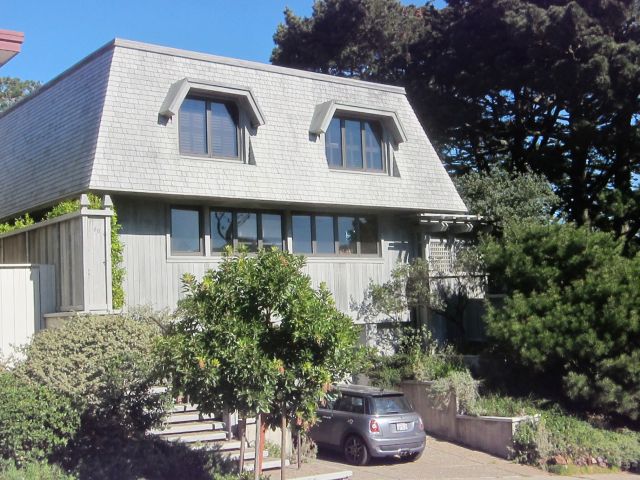 |
|
|
As part of her report, Simonson created the document ‘Resources for Homeowners,’ that should prove useful.
Since writing this thesis Simonson has joined the San Francisco architectural firm Page & Turnbull, where she is helping to create design guidelines for the Eichlers of Orange, in Southern California. The firm also created design guidelines recently adopted in Palo Alto.
Will Diamond Heights be next?
She says the city did not do the context statement with that goal explicitly in mind, but more to learn more about the place. But, she says, "I think at some point the city might get around to formally designating it" as historic.
“These neighborhoods,” she writes of Diamond Heights and tracts of similar vintage, “are quickly passing the 50-year mark that is usually used as a benchmark for consideration for landmark status, and preservation planning and advocacy are required to bring awareness to the significance of these resources before they are completely lost.”
- ‹ previous
- 506 of 677
- next ›



